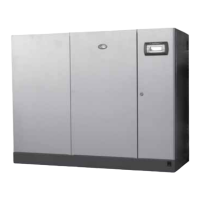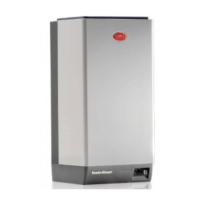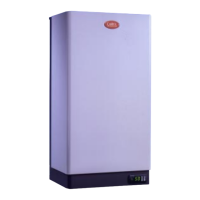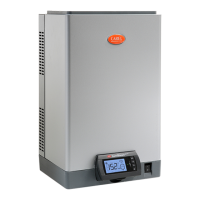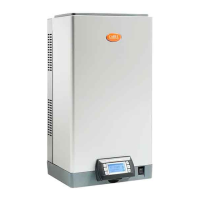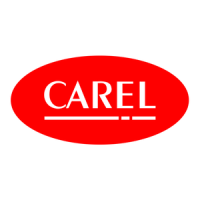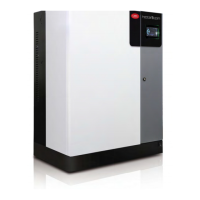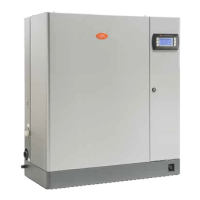terminal block “T” inside the electrical panel, rather than terminal 3U.
Fig.4.p
The following probes can be connected:
CAREL probes for rooms DPWC111000
for air ducts DPDC110000, DPDC210000
for industrial applications DPPC210000
Tab.4.l
Note: third-party active probes can also be connected to the controller.
CONTROL WITH TWO HUMIDITY PROBES
l short-circuit terminals 7U and 8U (jumper) to enable production; alternatively connect terminals 7U –
8U to a remote contact (e.g.: switch, timer,...);
l connect the main active room probe to terminals 1U, 2U (GND) and 3U (+12Vdc);
l connect the second active probe to terminals 5U, 3U (+12Vdc) and 6U (GND);
l to enable control, set:
Index Parameter Description
Ea01 Type of control Modulation with two humidity probes
Ea02 Control with two probes Set the weight of the two probes (0-100%)
Ea05 Modulating control
Set:
humidity set point (0-100 %rH)
differential (2-20 %rh)
Minimum production (25-100%)
Maximum production (25-100%)
Ec01 Type of main probe Select from: 0-1V, 0-10V, 2-10V, 0-20mA, 4-20mA
Ec02 Second probe type Select from: 0-1V, 0-10V, 2-10V, 0-20mA, 4-20mA
Tab.4.m
The controller will calculate the weighted average between the two probes. The weight of the two
probes can also be set.
Note: when using Carel 0-10V probes, connect the probe power supply +(G) to terminal “14” on the
terminal block “T” inside the electrical panel, rather than terminal 3U.
40|4. Electrical connections
gaSteam - UG +0300090EN rel. 1.2– 09.10.2018

